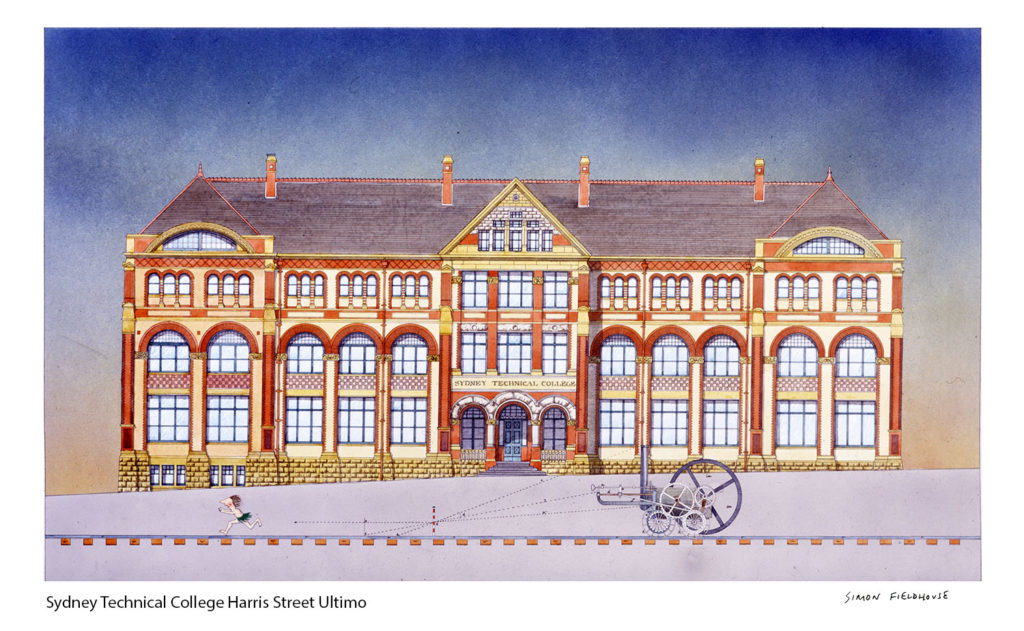
Sydney Technical College Harris Street Ultimo
Sydney Technical College Harris Street Ultimo have high historical significance and if you take the time to look at them, you will see a hotchpotch of rich architectural styles charting the evolution of the College as it expanded. These buildings date from the late 19th century through to post-Federation and the inter-war period of the 20th century.
The oldest buildings, along Mary Ann Street and fronting Harris Street, Ultimo, were erected between 1891 and 1892 and designed by the Government Architect W.E. Kemp. They are Building A (former Sydney Technical College - main college building), The Muse (former Technological Museum), Turner Halland Building I (former Sydney Boys High School). To this day, these buildings remain one of the finest groups of Romanesque Revival style in Sydney, although Turner Hall (before extension) and Building I are often described in the Queen Anne style.
Another significant building is Building H, the former Sheep and Wool building and Architecture and Building Trades building. This building, erected in several stages, illustrates the remarkable growth undergone by Sydney Technical College during the 20th century. Building P (Engineering and Allied Trades School) is another historic building designed by a government architect – Harry Rembert and is regarded as one of his outstanding works.
Spectacular sandstone carvings of Australian flora and fauna decorate the Mary Ann Street frontage of Ultimo College. These carving designs were created and carved by McIntosh and Fillans, former students and teachers of Sydney Technical College in the late 19th century.The beautiful and unique carvings feature waratahs, banksias, kangaroos, wombats, lyrebirds, echidnas and others. This was a very unusual idea at the time as many public buildings still paid tribute to European heritage and traditions like gargoyles. There is no doubt the designs were influenced by an Australian nationalism promoted by Lucien Henry, Head Instructor of the Art Department (1884-1891). Described as a visionary, Henry inspired a whole generation of art teachers, decorative artists and sculptors to use Australian flora and fauna in architecture and design.